Lady on a Train

Brief Synopsis
Cast & Crew
Charles David
Deanna Durbin
Ralph Bellamy
David Bruce
George Coulouris
Allen Jenkins
Film Details
Technical Specs

Synopsis
Arriving in New York City for a Christmas visit with her aunt, Nicki Collins sees through her train window the murder of shipping magnate Joseah Waring. Because of her known addiction to mystery novels, the debutante is unable to convince the police that she witnessed a crime, and decides to begin her own investigation. After viewing a newsreel in which Waring is reported to have died accidentally while decorating a Christmas tree at his Long Island estate, Nicki sneaks onto the property, only to be discovered by Arnold Waring, Joseah's nephew. Arnold, however, mistakes Nicki for Margo Martin, a nightclub singer and Joseah's fiancée. Posing as Margo, Nicki is then allowed to witness the reading of Joseah's will, in which the tycoon disinherits his family and leaves the bulk of his estate to Margo. Later, while searching Joseah's room, Nicki finds the bloody slippers the tycoon was wearing when he was killed, but Mr. Saunders, Waring's personal secretary, sends Danny, a chauffeur, to Nicki's hotel room to recover the incriminating evidence. Nicki then goes to The Circus Club to see Margo, but when Arnold shows up, Nicki is forced to lock the singer in her dressing room and perform in her place. Nicki is later waylaid by Saunders and Danny, but she is soon rescued by mystery writer Wayne Morgan, at the cost of his engagement to long-time fiancée, Joyce Williams. Saunders is then killed, allowing Nicki and Wayne to sneak out of the nightclub with the slippers. The two are arrested the next morning for the nightclub murder, and evidence of their innocence is destroyed when Maxwell, Wayne's valet, cleans Joseah's bloody slippers. Nicki is later bailed out of jail by Arnold, but she runs away as she suspects him of the murders. She then mistakenly seeks the protection of Jonathan Waring, Arnold's older brother, unaware that he is the psychopathic killer. Nicki suddenly realizes the truth when she discovers that she is in the same room in which Joseah was killed. Jonathan tells Nicki that he plans to kill her, then frame his brother for the murder. Arnold manages to rescue Nicki, only to have Wayne arrive, mistake him for the killer and give Jonathan back his gun. Wayne is followed to the Waring warehouse by the police, however, and Jonathan is finally arrested. Later, Nicki and Wayne marry, and the writer is forced to tell his new bride the ending of his latest book in order to begin their honeymoon.

Director
Charles David
Cast

Deanna Durbin

Ralph Bellamy
David Bruce

George Coulouris

Allen Jenkins
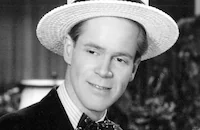
Dan Duryea

Edward Everett Horton
Jacqueline De Wit

Patricia Morison
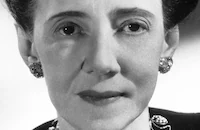
Elizabeth Patterson

Maria Palmer
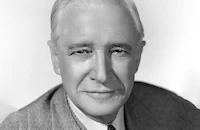
Samuel S. Hinds

William Frawley
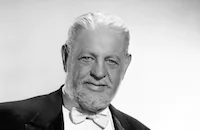
Thurston Hall

Clyde Fillmore
Mary Forbes
Sarah Edwards
Ben Carter
Nora Cecil
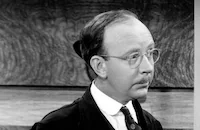
Hobart Cavanaugh
Matt Mchugh
Alfred Larue

Poni Adams
Kathleen O'malley
Jean Trent

Barbara Bates

Karen Randle
Tom Dugan

Addison Richards

Joseph Crehan
Chester Clute
Ralph Peters
Charles Cane
Perc Launders
Andre Charlot
Eddie Bruce
George Lewis
Charles Sherlock
Bert Moorhouse
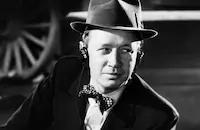
Eddie Acuff
Alice Fleming
Ed Waller
Eddie Dunn
Jack Norton
George Chandler
Charles Deschamps
Bert Roach
Robert Dudley
George Lloyd
Al Ferguson
Eddie Bartell
Mabel Forrest
Sam Mcdaniel
Ernest Anderson
Lockard Martin
Dick Hirbe
Ethel May Halls
Crew
Edmund Beloin
Woody Bredell
Bernard B. Brown
Leslie Charteris
Howard Christie
Robert Clatworthy
Edgar Fairchild
John P. Fulton
Russell A. Gausman
John B. Goodman
Nanette Grant
Franz Gruber
William Holland
Felix Jackson
Jean Kenney
Ted J. Kent
Joe Lapis
Joseph Mohr
Robert O'brien
Ronald K. Pierce
Maceo Pinkard
Cole Porter
Miklos Rozsa
Frank Shaw
Jack Smith
Richard Towers
Roy Turk

Videos
Hosted Intro
Film Details
Technical Specs

Award Nominations
Best Sound
Articles
Lady on a Train - Lady on a Train
In 1936, two teenage singers dazzled audiences with their spectacular singing in an MGM short called Every Sunday. Both 13-year old Judy Garland, who sang pop songs, and 14-year old coloratura Deanna Durbin, who sang classics, had remarkably mature vocal abilities. Hollywood legend has it that MGM chief Louis B. Mayer looked at Every Sunday when he was trying to decide which of the two girls he would keep under contract. Supposedly, he told underlings to "get rid of the fat one." Although both girls were plumpish, Garland got the contract, and Durbin got the axe. Universal saw the potential, immediately snapped up Durbin, and starred her in Three Smart Girls (1936). In another version of the story it was a Universal executive who saw Every Sunday. He wanted Garland, but an assistant signed Durbin by mistake. However it happened, Three Smart Girls made Durbin a star, and made Mayer furious. It would take Garland a little longer, but her stardom would soon equal, then surpass, Durbin's.
Initially, however, Durbin was the bigger star. In the late 30's and early '40's, she went from success to success, and is credited with saving Universal from bankruptcy. In 1938, Durbin, along with Mickey Rooney, received a miniature Oscar for "bringing to the screen the spirit and personification of youth and as juvenile players setting a high standard of ability and achievement." By 1945, Durbin was the highest-paid female star in the country. Now in her 20's, Durbin had outgrown the spunky-teenager roles that were her forte, and was branching out into more sophisticated parts.
Lady on a Train (1945) offered such a role. The film was a thriller, but with generous helpings of the fast-paced comedy at which Durbin excelled. It opens with Durbin, a naive young woman on a train heading into New York City. As the train approaches Grand Central, she sees from her window a murder being committed in a nearby office building and spends the rest of the film trying to solve the crime, with the help of a mystery writer, played by David Bruce. Along the way, Durbin impersonates a nightclub singer and croons a sultry version of "Gimme A Little Kiss, Will Ya, Huh?"
The script for Lady on a Train was based on a story by Leslie Charteris, who created the dapper detective known as "The Saint." The comedy came courtesy of screenwriters Edmund Beloin and Robert O'Brien, who had written for Jack Benny's radio show, and would go on to write films for Bob Hope. The film also had an exceptionally strong supporting cast of comedy stalwarts such as Edward Everett Horton, Allen Jenkins, and Elizabeth Patterson; interesting heavies like George Coulouris and Dan Duryea; and the always-dependable Ralph Bellamy.
Still, in spite of a few good reviews like Variety's ("Deanna Durbin explores the hazardous path of farce comedy...and does a bang-up job of it"), critics were not kind to Lady on a Train. Some, like John McCarten of the New Yorker, were gratuitously mean-spirited about Durbin's appearance: "she has developed a marked resemblance to [journalist] Dorothy Thompson, who is a handsome but hardly cute type...juvenile capers can become sticky when cut by a fairly substantial young matron." It seemed that the critics either didn't want to let Durbin grow up, or were confused by the mixture of comedy and crime. Today's critics, however, have no such problems, and are much more enthusiastic about Lady on a Train. Leonard Maltin calls it "a lighthearted whodunit," and "the most successful attempt to adapt her earlier persona to a grown-up Deanna."
Lady on a Train was produced by Felix Jackson, whom Durbin would marry soon after they finished making the film. They divorced in 1948, and in 1950, Durbin married Lady on a Train director Charles David. Soon after, Durbin retired from the screen and moved to France. Widowed in 1999, Durbin remains happily out of the spotlight. She has not given an interview since 1949. Perhaps for that reason, she's nearly forgotten today. Lady on a Train gives viewers a rare opportunity to get reacquainted with the delightful Deanna Durbin.
Director: Charles David
Producer: Felix Jackson
Screenplay: Edmund Beloin & Robert O'Brien, based on a story by Leslie Charteris
Editor: Ted J. Kent
Cinematography: Elwood Bredell
Costume Design: Howard Greer
Art Direction: John B. Goodman, Robert Clatworthy
Music: Miklos Rozsa
Principal Cast: Deanna Durbin (Nikki Collins), Ralph Bellamy (Jonathan), Edward Everett Horton (Mr. Haskell), George Coulouris (Mr. Saunders), Allen Jenkins (Danny), David Bruce (Wayne Morgan).
BW-95m. Closed captioning.
by Margarita Landazuri

Lady on a Train - Lady on a Train
Quotes
Trivia
Notes
Early Hollywood Reporter production charts list Frank Shaw as the film's associate producer, but all other contemporary sources credit Felix Jackson in that position. Leslie Charteris, the writer of the original story upon which Lady on a Train was based, is best known as the author of "The Saint" novels and short stories. Bernard B. Brown received an Academy Award nomination for the sound recording on Lady on a Train, but lost to Stephen Dunn for his work on Paramount's The Bells of St. Mary's (see entry above).

















